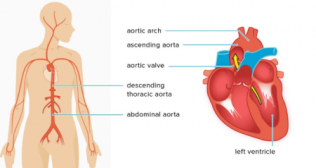What Is A Ganglion Cyst? Causes, Diagnosis & Treatment
Ganglion cysts are benign lumps that are commonly known to occur along the joints or tendons in the hand or the wrist. In most cases, they are not cancerous and therefore harmless in nature. These cysts are full of fluid and have the tendency to quickly appear, disappear, and change in size. Although they can appear in several locations, they frequently develop on the back of the wrist. Other affected sites where ganglion cysts appear include the ankle, foot, palm, the back of the knee (Bakers cyst), and fingers.
Also known as Bible cysts, ganglion cysts usually do not mandate any treatment. However, there are cases wherein treatment is suggested especially if the cysts turn out to be painful, interfere with the normal day-to-day functioning or simply if they look unpleasant to the naked eye. They generally resemble small bumps while the larger ones can even look like balls lodged under the skin.
Causes
Doctors have no proper reasoning to explain what causes them, although there might be a genetic link and/or biological cause. Furthermore, according to studies, it’s also been reported that it’s far more common in women as compared to men and are known to predominantly occur between the ages of 30-60 years.
Some theories have even pointed out that suffering from an injury or a massive fall can instigate the body to form an internal blister. In some cases, these cysts are known to appear when the joints are inflamed – typically associated with arthritis. These cysts are also fairly common amongst gymnasts and body-builders who are known to apply stress to the wrist region. In case of kids however, ganglion cysts are rarely known to manifest in children younger than 10 years of age. Because the cause of ganglion cysts is unknown, prevention is said to be impossible.
Symptoms
Most common ganglion symptoms include:
- A noticeable lump which is usually soft and immobile. That being said, there are cases where ganglions remain invisible under the skin. These are called as occult ganglions.
- A tingling or burning sensation – especially if the cyst puts pressure on the nerves that pass through the joint.
- Incessant pain, irritation, and ache made worse by joint motion.
- Larger cysts often look nasty and are hideous to look at.
Diagnosis
To diagnose a ganglion cyst, a doctor will perform a thorough examination of the affected area. Subsequently, he will use the following tests to assess the extent and nature of the ganglion cyst.
- X-rays to properly diagnose the cyst and also to rule out the possibility of arthritis or a bone tumor.
- Imaging tests such as MRI scans and ultrasounds to distinguish the cyst from other tumors.
- A brief look at the patient’s medical history.
- Needle aspiration with the aid of a fine needle that will be used to draw off fluid, which will be later examined in a laboratory.
Treatment
Although in most cases, treatment is not required, there are a bunch of options available for treating a ganglion cyst:
- Close monitoring without any treatment. If the cyst causes no pain and does not impair with movement, the doctor may decide to wait & observe to figure out the next course of action. Sometimes, a cyst may simply vanish after a while.
- Aspiration and injection involve drawing off the fluid with a fine needle following which a steroid medication may be injected into the mass. This method may or may not cause the cyst to disappear.
- Surgery – when all other treatment options fail, the doctor might advise getting the cyst surgically removed by a specialist such as an orthopedic surgeon.
- Even after treatment and surgery, there’s no guarantee that the cyst will not return. Although having said that, the likelihood of the cyst reappearing is lesser in case of surgery as compared to patients who undergo needle aspiration.



















